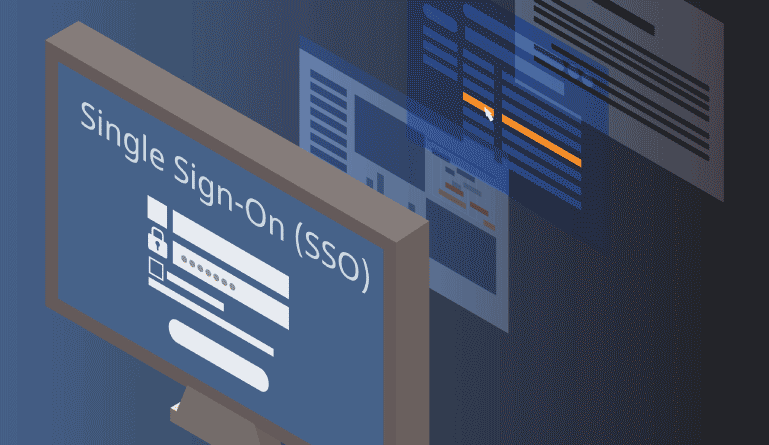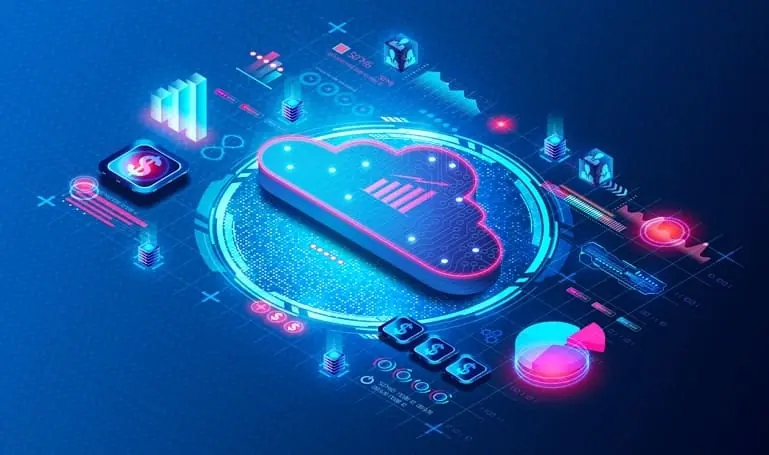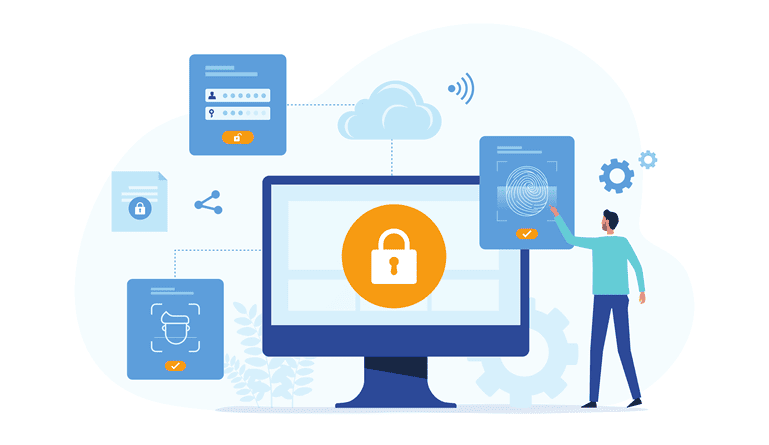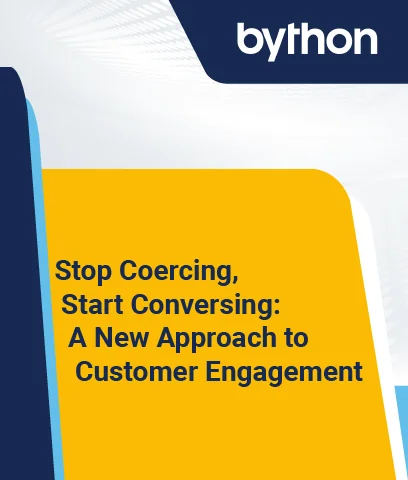Single sign-on (SSO) is defined as an authentication service that allows users to log into multiple independent applications with the same set of credentials without having to enter them over and over again. As web-based applications become the essential pillars of the modern digital experience, SSO is invaluable for convenience and security.
The Evolution of Single Sign-On: How Has SSO Improved Over the Years?
SSO technology has come a long way from its early inception stages, garnering a brand-new dimension in today’s security-conscious world.
- Early adoption (2000s): In the early 2000s, SSO solutions primarily focused on centralized authentication mechanisms. You could log in once and access multiple applications and services without the hassle of repeated logins.
- Emergence of federation protocols (mid-2000s): As digital ecosystems expanded, it created the need for interoperability. Federation protocols like Security Assertion Markup Language (SAML) emerged to support data exchange between identity and service providers.
- OAuth and OpenID Connect (late 2000s-early 2010s): With the proliferation of web and mobile applications, new authentication protocols such as OAuth and OpenID Connect gained prominence. They facilitated secure access delegation between apps, compatible with web and mobile applications.
- Integration of multi-factor authentication (2010s): SSO systems integrated MFA capabilities to address evolving security threats. It adds an extra layer of security by requiring users to provide multiple forms of authentication, such as passwords, biometric data, or one-time codes.
- Adaptive authentication (2010s-2020s): Recognizing the importance of context-aware security, SSO solutions began adopting adaptive authentication mechanisms. It would dynamically analyze contextual factors like user behavior, location, device characteristics, and network attributes to adjust authentication requirements based on risk levels.
- Integration with identity and access management (2020s): During this time, SSO solutions evolved to integrate seamlessly with IAM platforms. This centralized the management of user identities, access policies, and authentication mechanisms across the organization, streamlining admin workflows.
- Transition to zero trust (2020s): SSO solutions began aligning with the principles of Zero Trust Architecture. It emphasizes continuous verification and most minor privilege access controls, requiring users and devices to authenticate their identity irrespective of location or network perimeter.
How Does SSO Work? Authentication and Tokenization Explained
The working principle behind SSO is surprisingly simple. It allows you to authenticate once and gain access to multiple applications and services without the need for repeated logins.
When you first attempt to access an application or service that supports SSO, it’ll redirect to an authentication server or identity provider. This server acts as a central authority for verifying your identity. You provide credentials, such as a username and password, to the authentication server.
Once you submit your credentials, the authentication server verifies them against its user database or directory service. The authentication server generates a unique authentication token or session identifier if your credentials are valid. This token proves your authenticated identity and is securely stored within your browser or device.
Next, the authentication server returns this token to the application or service you initially requested access to. The application or service receives and validates the token with the authentication server to ensure you are authenticated.
Upon successfully validating the token, the application or service grants you access without requiring you to enter your credentials again.
Instead, it recognizes the token as proof of your authenticated identity and allows you to interact with its features and resources. As you navigate between different applications and services supporting SSO within the same SSO ecosystem, the authentication process remains transparent.
Whenever you access a new application or service, the SSO mechanism seamlessly authenticates you using the existing session token or establishes a new session if necessary. The entire process is abstracted to the user and takes place so seamlessly that it creates an intuitive – yet secure – end-user experience.
Benefits of SSO in 2024
Despite being around for over two decades now, SSO remains a relevant, even critical, component of IT infrastructure. This is because it allows CIOs and CTOs to:
1. Enhance user experiences
With SSO, you experience streamlined access to multiple applications and services. There’s no need to remember and manage separate credentials for each platform. By logging in once, you gain immediate access to all authorized resources within the SSO ecosystem, saving time and effort.
2. Improve security
SSO implementations can integrate advanced security features such as MFA and adaptive authentication. These require users to provide additional forms of authentication beyond passwords, such as biometric data or one-time codes, bolstering the overall security of your accounts.
3. Centralize access control
Administrators can easily enforce access policies, permissions, and authentication requirements across the entire organization or ecosystem through a single SSO solution. You benefit from consistent access controls and security, regardless of the applications and services you use.
4. Increase productivity
SSO boosts user productivity by reducing the need for repeated logins and minimizing authentication barriers. You can seamlessly transition between various apps without disruptions, focusing on tasks and workflows without unnecessary authentication interruptions.
5. Simplify IT management
Since everything is housed in one place, IT admins can efficiently provision and de-provision user accounts, manage authentication policies, and monitor activity from a single interface. This reduces administrative overhead and enhances overall IT governance.
6. Streamline compliance and audits
SSO implementations can incorporate robust auditing and reporting capabilities to facilitate compliance with regulatory requirements and industry standards – such as GDPR. You can track user access patterns, monitor authentication events, and generate comprehensive audit trails to demonstrate compliance with data protection laws.
Challenges and Considerations: Getting SSO Right
While SSO offers plenty of benefits – and is a business essential in 2024 – organizations may face a few challenges during implementation. For instance, integrating SSO with existing applications and services can be complex. Standardized authentication protocols such as OAuth 2.0 and OpenID Connect offer interoperability across platforms.
Further, it may introduce potential security risks, such as single points of failure if user credentials are compromised. Encryption and secure communication protocols can help protect sensitive authentication data transmitted between clients and authentication servers.
Some of your users may be concerned about privacy and data sharing when using SSO solutions, especially if they must share their information with third-party identity providers. To address this, provide transparent information about the data collection and sharing practices. The SSO solution must deliver a seamless experience to drive adoption and minimize user frustration.
Finally, remember that adopting proprietary SSO solutions may result in vendor lock-in. When migrating to alternative SSO providers or an open standards-based framework, you may encounter challenges. That is why choosing solutions that adhere to industry standards and guarantee compatibility is essential – since vendor lock-in of your identity information can prove seriously limiting in the long term.
What is the Future of SSO?
Shortly, you can expect SSO systems to become even more intelligent and adaptive – leveraging machine learning algorithms and AI-powered analytics to analyze vast amounts of user data and behavioral patterns to predict threats and adjust the authentication process in real time.
Moreover, blockchain could revolutionize SSO implementations by decentralizing SSO. For example, a blockchain-based identity platform could provide immutable records of user identities and authentication events, ensuring transparency and resistance to tampering. By leveraging blockchain, SSO systems can establish trustless authentication protocols and eliminate single points of failure.
As new forms of secure login systems emerge, organizations already invested in solid identity infrastructure stand to gain a competitive edge – against industry rivals and cyber criminals.







